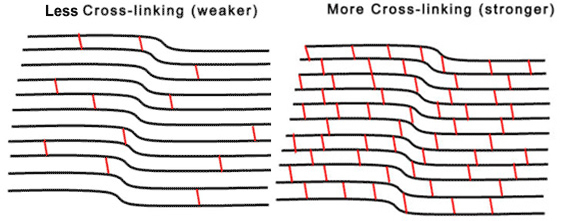For patients diagnosed with keratoconus, one of the most pressing questions is whether this progressive eye condition can be stopped. The answer lies in an innovative treatment called corneal cross-linking (CXL), a procedure that has transformed the outlook for keratoconus patients.
Keep reading to learn more about keratoconus and whether corneal cross-linking could save your sight.
What is Keratoconus?

Keratoconus affects approximately 1 in 2,000 people, typically emerging during teenage years and progressing through their twenties and thirties. Without intervention, this eye condition can severely impact quality of life, making everyday tasks like reading and driving increasingly difficult.
Keratoconus occurs when the cornea gradually thins and bulges outward into an irregular cone shape. This structural change significantly impacts how light enters the eye, leading to distorted and blurry vision that often cannot be fully corrected with traditional glasses or contact lenses.
The condition typically begins with mild symptoms that many patients initially dismiss as normal vision changes. Early signs include slight blurring of vision, increased sensitivity to light and glare, and the appearance of straight lines looking bent or wavy.
As keratoconus progresses, symptoms become more pronounced, including significant visual distortion, frequent changes in eyeglass prescriptions, and difficulty wearing contact lenses due to poor fit and discomfort. While the exact cause of keratoconus remains unknown, research suggests a combination of genetic and environmental factors.
How Corneal Cross-Linking Can Help Patients with Keratoconus

Corneal cross-linking is a procedure used to treat keratoconus that works by strengthening the cornea’s collagen fibers, which are responsible for maintaining the cornea’s shape and structural integrity. In patients with keratoconus, these collagen fibers become weakened, allowing the cornea to bulge forward under normal eye pressure.
The cross-linking procedure creates new bonds between corneal collagen fibers, effectively reinforcing the cornea’s structure. The treatment involves applying riboflavin (vitamin B2) eye drops to the cornea, followed by controlled exposure to ultraviolet A (UVA) light.
This combination triggers a photochemical reaction that forms new cross-links between collagen fibers. The result is a cornea that is more resistant to further thinning and bulging.
Batra Vision Medical Group utilizes the advanced KXL® System, which represents the latest evolution in cross-linking technology. This system achieves accelerated cross-linking in just minutes by increasing the UVA power while maintaining the same total energy delivery as traditional methods.
The KXL® System is the first and only cross-linking system manufactured with accelerated capabilities, offering the highest power available and a superior beam profile for precise treatment.
Does Corneal Cross-Linking Really Work?
The effectiveness of corneal cross-linking has been extensively studied and validated through clinical trials. Research consistently shows that cross-linking can halt the progression of keratoconus in approximately 90% of patients.
While the procedure doesn’t reverse existing corneal changes, it prevents further deterioration, which is crucial for preserving vision and avoiding the need for more invasive treatments like corneal transplants. Batra Vision Medical Group was among the original trial sites for corneal cross-linking studies, giving them unique insight into the long-term outcomes of this treatment.
The procedure is particularly effective when performed during the progressive stages of keratoconus, typically in patients under 35 years of age, when the condition is most active. While the primary goal of corneal cross-linking is to halt keratoconus progression, many patients also experience additional benefits.
For example, the procedure can improve the fit and comfort of contact lenses, making them a more viable long-term vision correction option.
Who is an Ideal Candidate for Corneal Cross-Linking?
Corneal cross-linking is FDA-approved for patients with keratoconus and post-LASIK ectasia. The ideal candidates are those with progressive keratoconus, particularly younger patients whose condition is actively worsening.
During the evaluation process at Batra Vision Medical Group, your eye doctor will perform comprehensive corneal mapping using advanced diagnostic technology to assess your cornea’s shape and thickness. This detailed analysis helps determine whether cross-linking is appropriate and allows them to monitor your cornea’s response to treatment over time.
Patients with very thin corneas or those with corneal scarring may not be ideal candidates for standard cross-linking. However, our experienced team evaluates each case individually to determine the best treatment approach, which may include modified cross-linking techniques or alternative treatments.
Long-Term Outcomes and Follow-Up Care

Following the procedure, a protective bandage contact lens is placed over the eye to promote healing. This lens remains in place for about one week while the corneal surface regenerates.
You’ll receive antibiotic and anti-inflammatory eye drops to support the healing process and prevent infection. Most patients experience some discomfort during the first few days after treatment, including light sensitivity, tearing, and a foreign body sensation.
These symptoms typically resolve within the first week as the corneal surface heals. Vision may initially be blurry but gradually improves over the following weeks to months.
Most patients can resume normal daily activities within one to two weeks. However, activities involving water exposure, heavy exercise, or dusty environments should be avoided during the initial healing period.
Following corneal cross-linking, patients require regular monitoring to assess the treatment’s effectiveness and ensure optimal outcomes. Batra Vision Medical Group provides comprehensive follow-up care that includes detailed corneal mapping and vision assessment at regular intervals.
Most patients achieve corneal stability within three to six months after treatment, though the full strengthening effect continues to develop over the first year. Long-term studies show that the benefits of cross-linking are sustained, with the vast majority of patients maintaining stable vision for years following treatment.
Have you been diagnosed with keratoconus? Schedule an appointment with Batra Vision Medical Group in San Leandro, CA, today to determine whether corneal cross-linking could be right for you!

 Follow Us!
Follow Us!